
“Inanimate objects, do you have a soul?” asked the French nineteenth century poet Lamartine (1790-1869).(2) If houses have a soul, might it linger around after they have turned into dust? What could it tell us about the world of those who created or owned them, and about the laughs and sighs which once echoed between their walls?
The house whose history is going to unfold through these pages stood, a century ago, in Richmond, Virginia, in what is known today as the Museum District. On the north side of the 3400 block of Grove Avenue, now lies in its place, the English Village, a U-shaped Tudor Revival residence built in 1927 (see fig. 1).
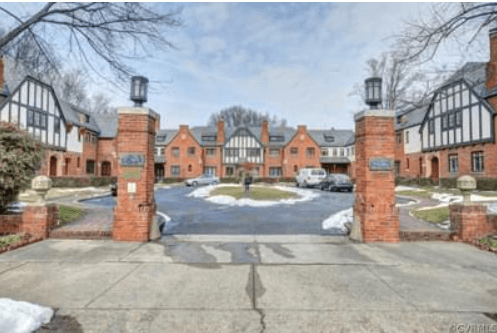
Fig. 1 (English Village)
The scars of the past would have long been forgotten if their vision had not been captured by the architect, Bascomb J. Rowlett (1886-1947). On the plan of the Village (Building permit #17445, dated 12/2/26), one can see, interlacing with the borders of the central lawn, the lines of the foundations of a quite imposing dwelling (see fig. 2).
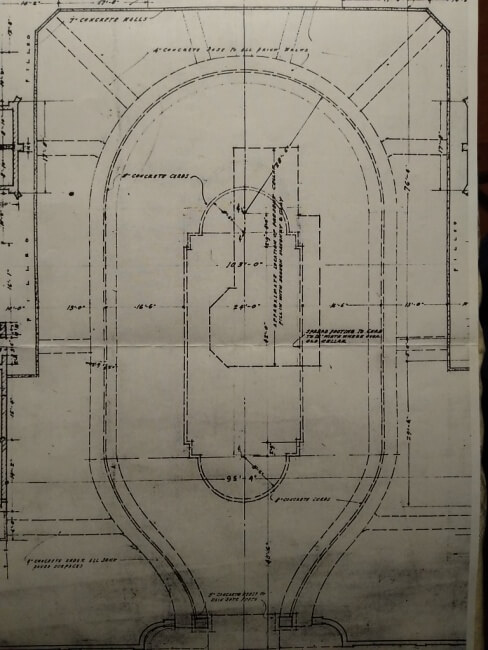
Fig. 2 (Traces of foundations of older building)
For its silhouette to slowly materialize, we only need to look at it through the eyes of the surveyors of the reputable Sanborn Map Company (see fig. 3). The bright yellow color they applied on their 1925 drawing tells us that they were inspecting a frame dwelling graced with spacious verandas. So inviting and yet deserted! We learn from the 1925 Chataigne’s Street Directory that the house was vacant. So, let us go back in time...
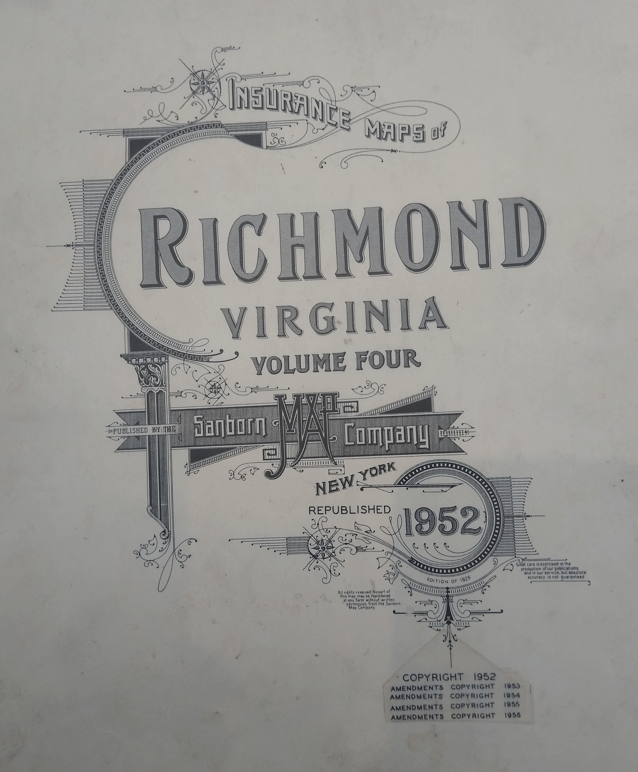
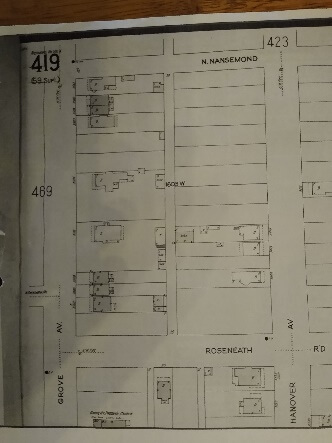
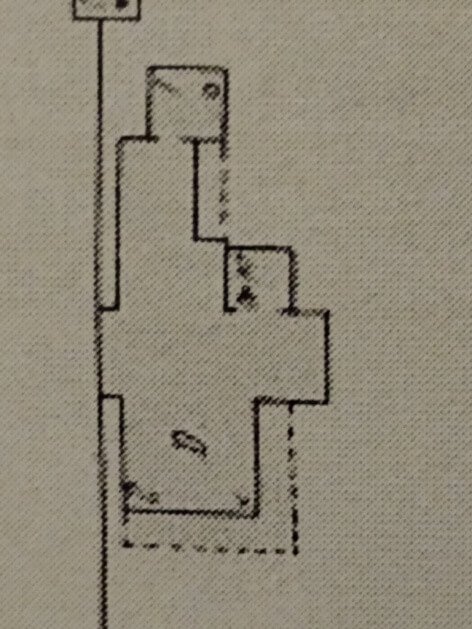

Fig. 3. Detail from Digital Sanborn Map
Richmond 1919-1925 vol.4, 1925; Republished 1952, Sheet 419
Before us stands Marion H. Chalkley (1869-1945), looking at his long-time neighbor Allen G. Collins (1862-1937), lost in the contemplation of a house he is now seeing for the last time. Together they had celebrated the birth of the twentieth century and seen their street numbers change year after year, depending on which way the wind of real life monopoly was blowing and Richmond expanding. “I can still see the girls, Mabel, Elizabeth, and little Dolly, hanging to their mother’s skirt, trying to catch the flowers she had just gathered from the garden, in order to weave a crown for their favorite doll,” says the sixty-four years old Allen. Their mother -- his sister – Dollie Adam (Fig. 4) was the guiding light of their life (1847-1922). Even now, looking at a mere photograph, one is mesmerized by her vivid presence. She had bought The House in 1901 (Henrico Courthouse, Deed Book 162B:52), and the whole family had followed her in that new venture, away from city life, into the rural decor of western Henrico. They were not going to become expert farmers, of course, but at least, the children would bloom away from the city beehive and the smoke which, although some celebrated it as a symbol of prosperity, fostered dreams of fresh springs and light breeze.
John Adam (1846-1920. See fig. 5), Dollie’s husband, a confederate veteran, was now a renowned pioneer merchandise broker. Allen, an alumnus of the Richmond College (which would become the University of Richmond in 1920) and of the University of Virginia, had, following into his father’s footsteps, become a prominent lawyer and attorney. But both, as perfect Richmonders and spiritual heirs of William Byrd and William Mayo, were primarily interested in the stimulating and lucrative puzzle game of real estate. They were even going to create their own business, the Nyva Realty Corporation.
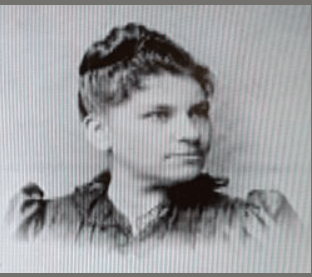
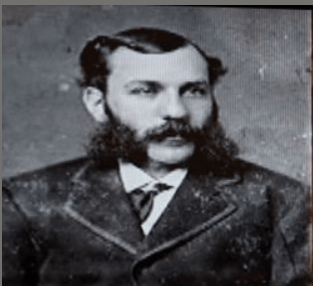

Figs. 4 (Dollie Adam), 5 (John Adam), and 6 (Lewis S. Squire; see note 3)
Their interest in speculation, as well as Dollie’s choice of Henrico (and of that specific piece of land) as the site of their new home, were far from being innovative. Fifty years earlier, in 1855, a gentleman by the name of Lewis S. Squire (1829-1899. See fig. 6)(3) had already been seduced by that new neighborhood, then called “Carysville”(4). He had moved from New England in 1849 and had soon gained recognition as a classical teacher, in a city still deprived of public schools. For years, he had read in the booming Richmond free press, seductive ads about the six miles new Westham Plank Road. “No more dirt and mud,” did they promise, “would slow down the traffic of farmers’products, in one direction, and the joyful travelling of city people, in the other.” Then, in 1855, as the condition of the Plank Road deteriorated and the description of the parallel road, ‘toll free’ Grove Street redirected the attention of land promoters, Squire did not hesitate any longer.
The lot on which he and his young wife, Louisa (1832-1884), envisioned a bucolic retreat in which to raise their two year old daughter, Ella, belonged to Lewis Dabney Crenshaw (1817-1875), soon to become a quite prominent personality in the city. In 1853, he had built a water-powered flour mill as a significant contribution to the then growing industrialization and international reputation of Richmond. The deed by which, on August 25, 1855, he conveyed the 22 acres of land to the Squires, contained a very unusual clause. The new owner was “to erect suitable buildings on the land [...] and to make the place his future residence.” If the demand was not met, he would have to return the land to its prior owner or find “a new purchaser not objectionable to said Crenshaw’s wish” (H. DB 67:317).
Two years later, a brand new “cottage residence” (as Squire would describe it) adorned the land. How did it look like? Could the academic Squire have remained indifferent to the appeal of the Gothic Revival style then made so popular by Alexander Jackson Davis (1803-1892) and Andrew Jackson Downing (1815-1852)(5)? Unfortunately, we do not have access to contemporary pictures, and the question must, for now, be left open. All we have to satisfy our imagination is a mere dot on an old map of Henrico (see fig. 7) -- a small anonymous dot, north of the Plank Road toll gate, between the residences of two popular Richmonders of the time, James A. Cowardin (1811-1882) and John C. Shafer (1821-1895, here spelled “Sheffer”).
Owned by a quite harmonious couple (Louisa would later create a school for girls), and cheered by the laughs and songs of children (Ella would soon be joined by Virginia, in 1856, Florence, in 1858, and Irving, in 1861), The House peacefully dozed when, suddenly, tragedy befell. An 1864 military map shows, less than a mile away, a star fort -- number 11 of the defensive circle built around the city (see fig.7)(6). Richmond being at war, the surrounding fields will be, for years, used for military exercises. The House’s walls are going to reverberate the sound of guns and canons, until the explosion of the city’s arsenal.
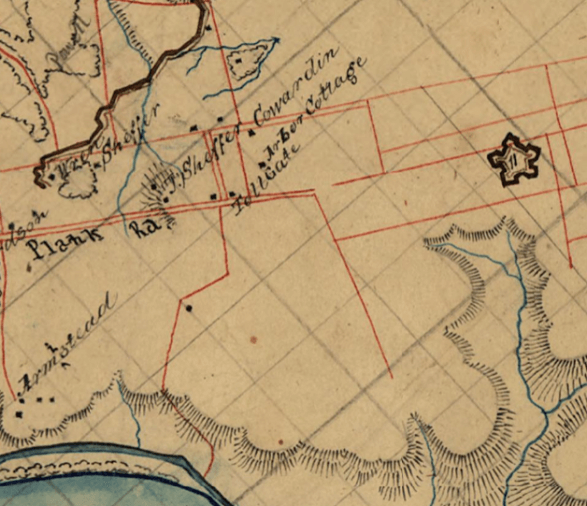
Fig. 7 Detail from 1864 map of Henrico. Library of Congress. G3883 H4S5 1864 M3.
On that April 2nd, 1865, the doors of schools remained closed. The fact that they had been opened during the war might explain why Squire’s service had been interrupted several times. Of all the miseries then suffered by Richmonders, Louisa might have been spared some of the anguish of separation so vividly described by Margaret Cabell Brown (abt. 1840-1939) or the biographers of Rebecca Robinson (1796-1879),(7) but the couple still had their share of hardship and tears. Two babies had enriched the family (Mary in 1863 and Francis in 1865), but in May 1865, they were going to mourn over the loss of little Virginia, a possible victim of the apocalyptic four of the Civil War: measles, chicken pox, typhoid, and dysentery. Is this the reason why the Squires then decided to sell The House? Built by a teacher, as a nest for his children, it would never know his youngest son, Charles (born in 1868), for in August 1866, its doors would be wide open for a new owner by the name of Joseph Gilmore Beattie (1822-1891. See fig. 8. H. DB 82:302-3).
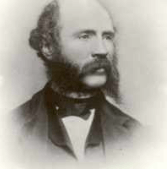
Fig. 8 Joseph Gilmore Beattie
Within a few years, it would see its environment expand as far as the river; its decor imitate George Cooke’s painting of “Richmond from the Hills” with Jersey cows and thoroughbred horses grazing under the blossom of apple trees. As a gifted “amateur,” the newcomer Beattie would soon be praised by the highest authorities among the gentlemen farmers of the time. In 1872, the jury of the Pomological Society would congratulate him for producing “the finest wine-sap apples on exhibition.” In July 1871, the Daily Dispatch had already announced that “the finest specimens of early peaches [of] the season were from Mr. Beattie, Grove Road.” This would not be his only contribution to the reconstruction of the city. Dr. Beattie was going to apply and promulgate new ‘scientific’ methods of farming through the Tuckahoe Farmers’ Club. From farming to politics, The House’s new owner would not shy away from anything. The Irish name he gave to The House, “Lisburn,” would soon be used to designate an entire neighborhood.
But, what else do we know about Joseph G. Beattie? In the 1850s, he had left his native Emerald Isle with his first wife, Mary, and established a successful medical business in Seneca, New York. As a Southern advocate, he had spent the early years of the Civil War in Canada. Then, back in the States, he had met Caroline Cornelia Canfield (1834-1922). The two newly widowed had soon decided to grieve in concert and got married in 1862. There could not be a more suitable partnership for such an exuberant and enterprising man. Caroline was the niece of the Secretary of State, William Henry Seward (1801-1872) and the widow of John Lawrence Schoolcraft (1806-1860), a highly respected US Congressman. They moved to Richmond at the end of the war, and when they bought The House, it was as if it had been passing from the hands of Margaret Mitchell’s Wilkes couple to the Butler’s. A member of the Tuckahoe Farmers’ Club commented in these terms the monthly meetings of the group: “[One] never fails to have a good time.” The House gained quite a reputation. On October 14, 1939, the author of the obituary of Robert McCallister Beattie, one of Joseph and Caroline’s sons, still mentions it with nostalgia as “a well-known Henrico County home of the older day.”
The “splendid home of the courtly and genial Doctor” was well worth being remembered (Beattie’s obituary, 15 July, 1891). The expression “splendid home” conjures a medley of images gathered from walking tours of historic Richmond and TV series like The Gilded Age. If walls really had ears, hidden behind fancy wall papers and heavy embroidered curtains, those of The House would have been splendidly entertained. In the library, they might have heard Beattie’s gentleman guests expressing their concerns about the impact of the 1873 depression or new anti-dueling laws. In the parlor, they might have surprised their elegant wives whispering behind their fans the name of Susan B. Anthony (1820-1906). While, in another room, Emma J. Linkhorn, the teenage black home servant (no longer a nameless hired slave) tried to keep under control the youngest inhabitants of the house. Of the eight children of Beattie and his wife Caroline, six had survived infancy. In 1880, the eldest, Harry Canfield, was 17, and the youngest, Marian Dickerson, was still a baby smiling at the future. So who could have foreseen the sad event yet to come?
The year 1884 was going to be for The House, what the twelfth stroke of midnight had once been for another Belle. But this was no fairy tale. When the fire was quenched, Beattie did not even look among the ashes for some traces of hope. He just left. Soon after, the merry members of the Farmer’s Club were celebrating its rival, “Clovercroft”-- the farm house by the river. For three years, nothing but leaves of wild ivy were going to protect its wounded walls from heat and cold, and the song of birds, from solitude. Then, one day, in the spring of 1887, they heard a voice. Beattie, at last? No. The accent was not Irish but Scottish. It was the voice of Matthew Gilmour--a man who promised to be a mostly absent owner for the next three years (H. DB120:54-55).
His tombstone, in Hollywood Cemetery, in Richmond, gives the following dates, 1837-1919. As a Scotsman, he was a citizen of Helensburgh, west of Glasgow, on the Clyde. This is where his first-born son, Abram David Pollock (1876-1948) would come into the world. Glasgow had been a brilliant center of tobacco shipping before the Independence War, and in the mid-nineteenth century, its merchants had started (on tip-toe) to send again their sons to Virginia to establish new contacts. Is this how Gilmour met his wife? For Roberta Pollock (1844-1901) was a Virginian. When Abram David was six months old, his parents settled in Richmond, and there, Roberta gave her husband three more children: Matthew (1878-1904), Roberta (1881-1949) and Elsie (1883-1917). Between 1871 and 1890, the Richmond Street Directory listed Gilmour as a “tobacconist” or “Tobacco stemmer.” He seems to have (like his ancestors under the XVIIIth century Scottish “Tobacco Lords”), silently prospered in the shadow of the flamboyant barons of the cigarette-making, John F. Allen (1814-1890) and Lewis Ginter (1824-1897). He would purchase over thirty lots of land between 1880 and 1906. The ones located in Lisburn will wear his trademark for a long time. The present-day Nansemond Street, whose name reminds us of one of Powhatan tribes, was still called ‘Gilmour’ in 1923. But, compared to the vast plantations of a Byrd or a Randolph (of which it was once part), a field encumbered by a ruin was everything but an ideal location for the growing of tobacco. It is therefore without any regrets that, in May 1890, he decided to sell it (H. DB 130A:170-71). Two years later, in 1892, the name of The House was to reappear in the Street Directory, not as “Lisburn” but “Lisborn.” Was it a symbolic typographical error or the expression of its new master’s wish? His name was William Oscar Burton (1857-1921. See fig. 9).
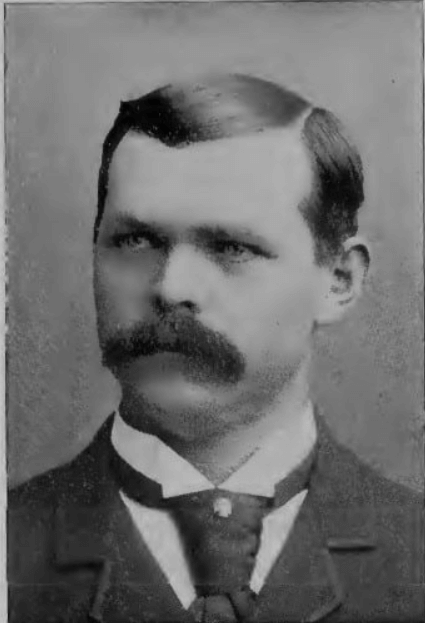
Fig. 9 William Oscar Burton
There was something prophetic in it as, like the one of several cities in England, it had originally meant “fortified town.” At his first visit, Burton had not picked up a handful of soil, but charred wood debris, and there was both grief and hope in his eyes--he was a trained carpenter. In February 1882, he had married Rosa Dove (1857-1928), and in 1892, they had five children. The last one, Rosa Dove, Jr. was born on that same year. We can see her, on her mother’s lap, in front of Burton’s brand-new house (see fig. 10)(8). How grateful we are, at last, to Niepce and his successors!
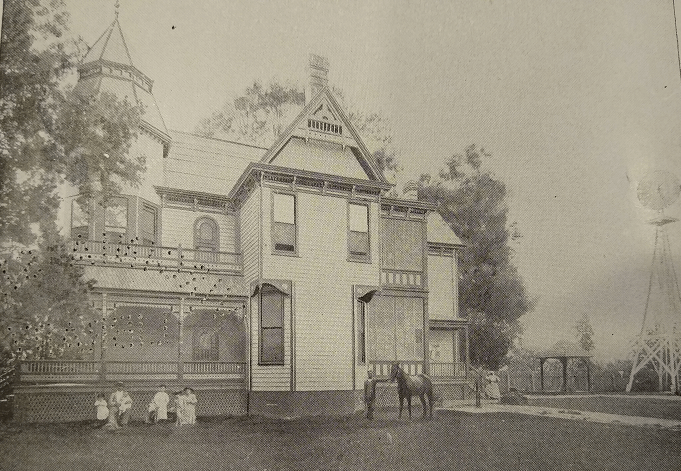
Fig. 10 William Oscar Burton’s house (see note 8)
Although Downing’s book on country houses had been published for almost half a century, Burton’s inspiration seems to have come straight from its first chapter on “the real meaning of architecture.” Deprived of any picture of Squire’s house, we cannot know how much of the past was reconciled with the present. The Gothic revival and the then popular Queen Anne style were both burgeons of the XIXth century interest in the Middle Ages (as was Burton’s middle name, Oscar, another fashion of the time, inspired by the poem of Ossian). “[Queen Anne] suburban houses typically followed a recognizable three-part formula: a corner tower, a dominant front gable, and a wrap-around porch.” One could not find a better description of the $3,000 new attires of The House.(9) Burton’s reputation as a contractor and a builder was established by then. The authors of The City On The James: Richmond, Virginia (published in 1893) state that “he [had] been engaged in that line for [...] ten years” (p. 169-70). He had put his signature on several of the finest architectural creations of the city. Some, having escaped the bulldozers of modernity, still exist for our pleasure, like the magnificent State Library (known today as the Patrick Henry Building) which still stands next to the Capitol.
Alas, as an example of the tragic reality of the Wheel of Fortune, the financial crisis of 1893 was going to see the downfall of many hopes. Was Burton one of its victims? From 1895 on, the sophisticated ads which had publicized his enterprise will return to a simple: “W.O.B, Carpenter.” In 1894, Rosa had given birth to a still-born son and Bertha had died the following year. The House had been sold. The world had changed. In Virginia, it was still ruled as a “culture of debt,”(10) but the code of honor and “friendship,” which had governed the network of exchanges between antebellum great planters, their peers, and European commercial associates, had been replaced by a network keyed by the word “mortgage.”(11) Until 1893, the ad published in the Street Directory had described Burton’s prosperous brick yards as “Manchester, VA., and Burton’s Siding. C. & O. Railway.” Was the ground on which his enterprise stood rented from the Chesapeake & Ohio Railway Company? In 1905, the Manchester Sandborn Map (sheet #7) shows the land between Hull and N. 15th streets as desperately empty.
Next, the history of The House will bear the stamp of the Empire of Rail Roads (with, as an emblem, the spectacular Triple Crossing, completed in 1901), Oil, and Finance (Richmond had twenty-one banks in 1893). It will start on April 1894 (H. DB 145A:177) with the coming of its new owner -- Isaac Grant West (1860-1955), a “special agent of Standard Oil Co,” described in his obituary as a “pioneer in the oil distribution business” (Richmond News Leader, June 6, 1955). He was born in Pennsylvania in August 1860, had graduated from Pennsylvania State Normal School, become a Latin teacher, and then, got married on May 15, 1884 in Louisville, Mississippi. He and his wife, Bella (1859-1944), had two children: a son, William Hyde (1885-1933) and a daughter, Eunice (1894-1977). He entered the oil business in Louisville, Kentucky, in 1882, and became associate with the Chess, Carley & Company, soon to be absorbed by Standard Oil. His name appears in the Richmond Street Directory in 1892 as manager of the Esso Division of Standard. The House is mortgaged, but the Wests have two servants: Patty Anderson, 20 and Hanna Woodson, 23. As the city has grown, the location of their residence is no longer limited to a laconic “Henrico” or “co.” It becomes “beyond Soldiers’ home,” in 1895, and “Grove Rd, cor Beatties la. Co,” in 1900.
Although the social life of its inhabitants seems to have been less flamboyant than in Beattie’s time, and telephone lines were still limited to businesses, The House was not sheltered from the events of the outside world. Conversations, inflamed by the reading of newspapers (like the Richmond Dispatch of July 4, 1896), might have brought a lot to its attention: gossips about popular figures, like Mrs. Jefferson Davis; details of a street accident involving an electric car of the Richmond Railway company; or complaints about the muddiness of the city drinking water (although The House’s occupants were privileged with a windmill). A visit to the Richmond Dispatch archives, at the Library of Virginia, is even today as enthralling an experience as the reading of a recent bestseller, and as dazzling as the electric lights which, in 1894, started competing with stars, in the streets of Richmond. And thus, seven years passed ... The reasons which compelled Isaac West to sell his residence are unknown, but the motivations of its buyer have already been unveiled. Having come full circle, we can now return to July 1901, and witness Dollie Adam signing the deed which, for 23 years, is going to bind the story of her family to The House’s destiny.
In the opening decade of the XXth century, the reconstruction of Richmond is turning into a wide reconfiguration. Through its location, The House is a privileged bystander of the movement of a population, black and white, who, deserting farms and plantations, tries to integrate itself into the universe of manufacturing, marketing and service. This is going to precipitate the growth of the city. In 1906, its tentacles will first seize Roseneath, the eastern boundary of the Lisburn neighborhood. Then, in 1914, they cross over. The House becomes (for a while) “Number 3418.”
Inside, it has not changed much since the Adams helped it turn the page from the Victorian to the Art Nouveau world, but it might have benefited from the reconciliation of the aesthetic and the functional, by accepting the gift of a Standard Oil Company new oil Cook-Stove or a Sydnor and Hundley refrigerator (made so attractive by newspaper ads).
Adam and Collins are now two dignified white-haired notable figures of the Richmond business world. Dollie has become a still energetic sixty-seven years old matron. She is free from the duties of child-bearing (six pregnancies between 1880 and 1894) and rearing which consumed most of her life time, even with the help of servants, like the Robinsons, Burley and Elnora. In 1913, Maude (1887-1962) had got married with William Cropp Granberry (1885-1955) and followed him to his hometown, Atlanta. Elizabeth (1891-1993) and ‘little’ Dollie (1892-1975), in their early twenties, enjoy silent movies, and attend informal evening dances or joyful picnics with their beaux--Sheppard Crump (1882-1960) and Joseph Temple Waddill (1884-1966). Enrolled in the Richmond Light Infantry Blues, both will soon distinguish themselves in the Mexican Border War...
...and in World War I. For, starting on July 28, 1914, a dramatic chain of explosions is going to shake the world, from Europe to Russia, Australia, and Japan. Germany bombs Paris in August 1914, and invades Belgium. On May 7, 1915, a German submarine sinks the British liner Lusitania, and on December 7, 1917, the United States declares war on Austria-Hungaria. Dollie and Joseph Temple Waddill get married on the following day. Richmond’s factories turn to the fabrication of shells. “About 8,000 Richmonders [will serve] in the armed forces during the conflict and 251 [will die]”.(12)
Crump and Waddill will come back home, physically unharmed, but on November 11, 1918, although its walls vibrate as Manchester factories happily blow their whistles, The House is in mourning. James A. Walsh (1876-1918), Dollie’s young nephew, who had lived with the Adams for all these years, has passed away in January -- probably one among hundreds of Richmonders victims of the flu epidemics. On the eve of what will be later called the “roaring twenties,” clouds of gloom darken the sky over The House. John Adam is going to die in April 1920, and two years later, in February 1922, as an echo of the title of Rudyard Kipling’s novel, The Light That Failed, Dollie passes away. She leaves The House to her youngest daughters, and the rest of her estate, as a Trust, to Maude and her two sons.
Elizabeth, who got married in 1921, is living in the north side of the city, in Meadow Farm (now a Museum, thanks to her generous donation). Sheppard Crump is raising pigs, then a “profitable venture for many Henrico farmers.”(13) Collins remains in The House, with ‘little’ Dollie and her husband. The Waddills have a pretty active social life. Joseph Temple, a civil engineer and surveyor, will soon be approached by the Rector of Bruton Parish Church to survey and map the area on which the XVIIIth-century Williamsburg is to be recreated. He belongs to several renowned clubs, like the Country Club of Virginia.(14) So, for the next three years, parlors and dining room will be everything but a hermitage.
For The House, this promised to be a visit to Wonderland. So many things had changed in the recent years. It ought to get acquainted with a whole universe of sounds -- from jazz and ragtime coming out of brand new radios, to the roaring of car engines (Ford had put an end to the bicycle craze, and Elizabeth herself would soon be one of the first women to obtain a driver’s license). The House wondered “What happened to women? Curves have changed into dull straight lines” (it did not know that the corset had been a casualty of war) “and skirts are getting shorter at each visit! As for the topics of their conversations...!” However, as daring as these might have been, one (in 1923) would have pleased Dollie’s spirit if it had still been haunting The House: two women, Sarah Lee Fain and Helen Timmons had been elected to the Virginia’s General Assembly. The Nineteenth Amendment, giving women the right to vote, had been accepted by the Congress in 1919, but in Virginia, it had not yet been ratified by the State. Was this election a promising sign?
There was something different about men too! In The House’s secret portrait gallery, Dollie’s all male predecessors had been displaying carefully sculpted mustaches, like Squire or Burton, or sideburns, like Beattie and Adam (had these been another casualty of war, due to an incompatibility with gas masks and the scarcity of fresh water on the battlefield?). Joseph Temple was clean-shaven and so was that visitor they addressed as ‘Reverend’ (Rev. Benjamin Huron Melton --1869-1944. See fig. 11). The House had already seen him before the war. He had then, temporarily, “left the salaried pulpit, [...] having decided to make a test as to whether Christian living and business success were compatible.” He shared Adam’s and Collins’ interest in Real Estate and many houses in today’s Floyd Avenue still remember him. In 1916, he had moved to Baltimore, then to Washington D.C., but he would visit occasionally, on his way to North Carolina, where he and his wife, Eva (c.1873-1944), had been born.
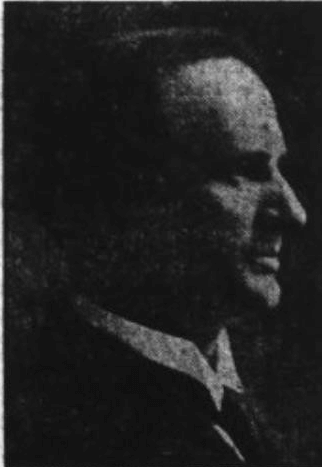
Fig. 11 Rev. Benjamin Huron Melton (see note 15)
What The House did not know is that, although it was still enjoying the Waddill/Collins Company, it had, once more time, changed owner. Confronted with the responsibilities of sharing ownership, Elizabeth and ‘little’ Dollie had decided to sell the property. Melton had bought The House in November 1923 (Richmond, DB 300A:49), and from 1924 to 1926 his name would figure on the tax register of the Clay district of the City of Richmond.
During that period, strange tremors were shaking the old Lisburn neighborhood. Its streets were renamed. Various land promotion companies were nibbling at its lands -- such as the adjoining lots Gilmour had left to his heirs. Thus surrounded, The House would soon have new concerns. According to the Richmond Street Directory of 1925, the Waddills had moved to a new address. Allen Collins was left alone. When Melton visited him, the word “investment” was popping more and more frequently into their conversations. So, when the value of the lot on which The House was standing suddenly surged from $3,650 to $4,750, “the die [was] cast.” The Real Estate Tax Book of 1926 indicates in the comment column that the land has been conveyed to the Bellevue Park Corporation. It is now ready to envision the English Village.
At this point, one would like to believe that, as many of its Californian contemporaries,(17) and as Edmund Harrison’s The Oaks (soon to be moved from Amelia to Windsor Farm, in 1927), The House would be given the opportunity to change scenery. Until the memory of such an event is uncovered in some secret archive, let us, for one last time, go back to 1925, and stand by Collins, while, in the library, the radio plays the “hit song” of the year, Isham Jones’ and Gus Kahn’s
“I’ll see you in my dreams…”
About the Author:
Chantal Maréchal, resident of English Village. Reproduced with their permission. Copyright © May 9, 2023, Chantal Maréchal.
Notes
1 I would like to express my grateful thanks to those whose help made this article possible: J. Scott Finn, for introducing me to the building permit of the English Village and the world of the Sanborn maps; Kevin Shupe and Courtney Thompson of the Library of Virginia for guiding me through a maze of reels in my quest for deeds, tax reports, and birth and death certificates; Michael Baker, Tracey Brockwell and Lauren Meigs of the Henrico County Public Library, for their kind assistance in locating technical and historical documents allowing me to explore the various facets of Richmond history; and Christel and Patrick McCullagh, for their enquenchable curiosity and final proofreading.
2 Alphonse de Lamartine (1790-1869). “ Objets inanimés, avez-vous donc une âme [...] ?” (“Harmonies poétiques et religieuses,” in Oeuvres complètes, édition Gosselin 1847, t. 2, III.2 “Milly ou la terre natale,” p. 159.
3 Image credits: John A. Cutchins, “School Days – Squire’s Classical School,” in Memories of Old Richmond [1881-1944], University of Virginia: McClure Press, 1973.
4 In celebration of Colonel Archibald Cary (1721-1787). It should not be confused with today’s Carytown which received that name in 1938 only. The Westham Plank Road had become Cary Street in 1927.
5 See for example: Alexander Jackson Davis, Rural Residences [...]. Designs, Original and Selected, for Cottages, Farms-Houses, Villas, and Village Churches [--], New York, 1837, and Andrew Jackson Downing, The Architecture of County Houses, including designs for Cottages, and Farm-houses, and Villas (New York, Dover Publications, Inc. First edited by Appleton & Company in 1850).
6 Image credits: Library of Congress / Geography and Map Division. G3883 H4S5 1864 M3.
7 Margaret Loughborough and James H. Johnston, The Recollections of Margaret Cabell Brown Loughborough: A Southern Woman’s Memories of Richmond, VA, and Washington, DC. In the Civil War (New York: Hamilton Books, 2010). Elizabeth L. O’Leary, Across Time. The History of the Grounds of the Virginia Museum of Fine Arts (Richmond: VMFA, 2019).
8 Image credits: Richmond, Virginia: The City on the James: The Book of Its Chamber of Commerce and Principal Business Interests. Andrew Morrison, ed. (G. W. Engelhardt. 1893): 50.
9 See Classic Commonwealth: Virginia Architecture from the Colonial Era to 1940. (Virginia Department of Historic Resources, 2015).
10 See Timothy H. Breen, Tobacco Culture (Princeton: Princeton University Press, 1985): 95.
11 See Shifflett A. Grandall, Patronage and Poverty in the Tobacco South. Louisa County, Virginia, 1860-1900 (Knoxville: The University of Tennessee Press).
12 See Virginius Dabney. Richmond: the Story of a City (Charlottesville and London: UP of Virginia, 1992): 290.
13 See Louis H. Manarin, The History of Henrico County (The County of Henrico, Virginia, 2011): 380.
14 See his obituary in The Richmond Times Dispatch of 13 July 1966.
15 Image credits: News Leader. Number 5,832. 16 October 1915, p. 3.
16 See News Leader 6,079, 31 July 1916.
17 See Diana C. Donovan’s San Francisco Relocated (Arcadia Publishing Library, 2015).
